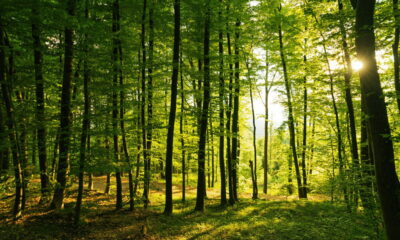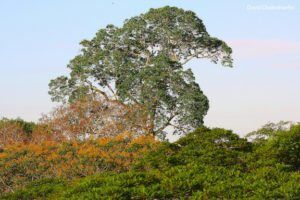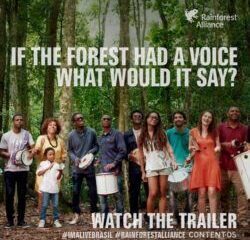

Environment
World Forest Week: Making a difference to communities in Cameroon
Today marks the beginning of World Forest Week, with world leaders gathering in Italy for the Committee on Forestry’s weeklong summit, which aims to shape a new agenda for world forests and sustainable management.
From the Amazon to Indonesia, deforestation is a global issue, and the loss of tropical rainforests remains staggeringly high. According to Think Global Green, 150 acres of rainforest are lost every minute of every day. Addressing this issue is global conservation organisation, Rainforest Alliance, who is working on the ground to help local communities sustainably manage their own forests, concessions, and lands.
At almost thirty years old, the Rainforest Alliance is no newcomer to sustainable forestry. As one of the founders of the Forest Stewardship Council back in the 1990s, the organisation has been imparting positive impacts for three decades.
The Rainforest Alliance recognises that community forestry is among the most sustainable forms of forest management, and evidence from its work in Latin America emphasises that community forestry can be a working solution in lieu of deforestation. When locals are able to take control of their own lands, their actions tend to reflect the community’s best interests. A recent analysis of Guatemala’s Maya Biosphere Reserve shows that deforestation rates in community forests where the Rainforest Alliance has worked were close to zero, while adjacent protected areas experienced forest conversion rates that were higher than regional averages.
The Rainforest Alliance is now working with forest communities in Cameroon to provide support to those who are engaged in, or would like to engage in, sustainable forestry management and the harvesting of non-timber products such as nuts. To date, the Rainforest Alliance’s efforts have benefited 12 local communities, which are home to around 10,000 people. As a collective effort with these communities, the organisation has laid the groundwork for sustainable methods of harvesting timber and non-timber forest products, while strengthening their internal governance and enabling them to operate in a competitive market environment. Additionally, it has facilitated the establishment of four local community-owned forest enterprises as a tool for pooling investments in equipment and social infrastructure, increasing negotiating power and improving access to markets.
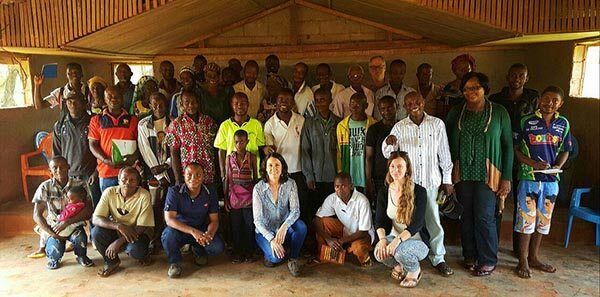
Whether aged five or fifty-five, education is still one of the most powerful gifts anyone can receive. And since training in best practices in forestry can benefit generations to come, it’s a gift that can keep on giving. A training session held in early July at Mintom, in southern part of the Dja Biosphere Reserve in Cameroon, saw trainer, Mrs Mballa Myriam, train members of the community forest management bodies on the creation and management of their own co-operatives. 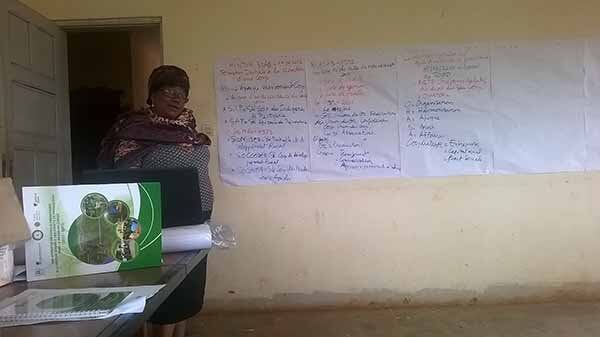
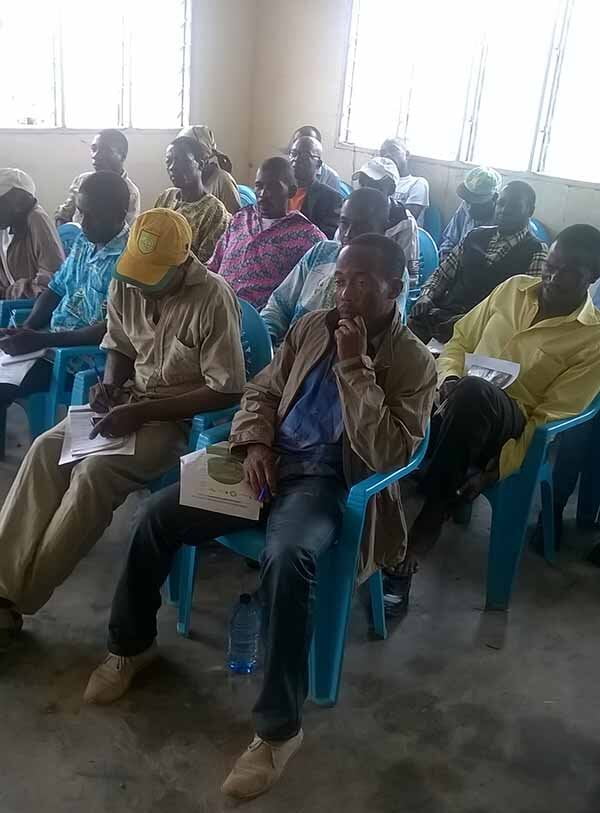
Sustainable forestry practices involve a holistic approach that takes workers’ well-being into account, as well as protecting the environment and biodiversity. A group of forestry workers in Sangmelima, Cameroon show off the proper protective gear needed to safely operate a sawmill.
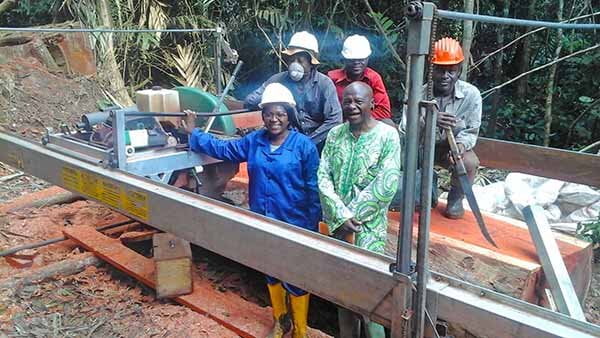
Forestry workers from Cameroon eagerly gather around a brand-new sawmill from partners on the ground, Akom. This equipment will sustainably lend much-needed economic support to the entire community. The delivery of sawmills and the training of production teams are essential elements, which provide freshly formed community forest enterprises (CFEs) with a ‘raison d’etre.’ Portable sawmills are used to cut logs into lumber, typically juxtaposed next to the tree being felled. Pooled resources for the processing of wood also renders operational and maintenance costs more affordable for CFEs, while allowing communities the chance to attain higher profit margins. First and foremost though, access to this type of processing equipment provides communities with options; it frees them from involvement with agents who may seek to take advantage by imposing unfavourable terms or by exploiting internal conflicts into unilateral and sometimes-illegal operations which tend to lack consent from the whole community. 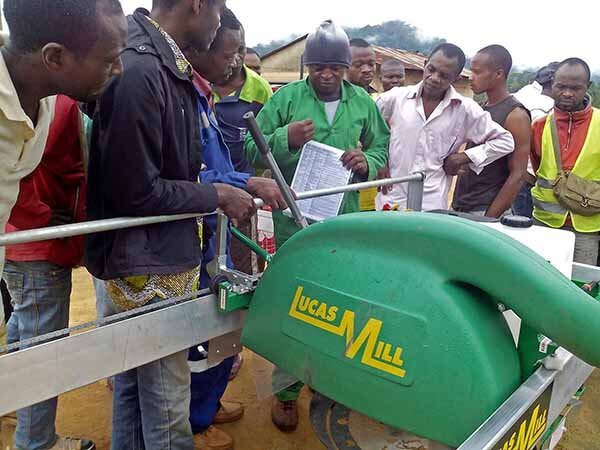
Locally managed community forestry enterprises can directly help communities to sustainably manage their forests’ economic opportunities. The woman shown here is selling Ndo’o nuts, to generate income from the local market. The Ndo’o nut is derived from wild mangoes, and is processed into edible pastes. Irvingia gabonensis, its scientific name, comes from a species of African trees, and is sometimes known as wild mango, African mango, or bush mango. These are edible, mango-like fruits, and are especially valued for their fat- and protein-rich nuts.
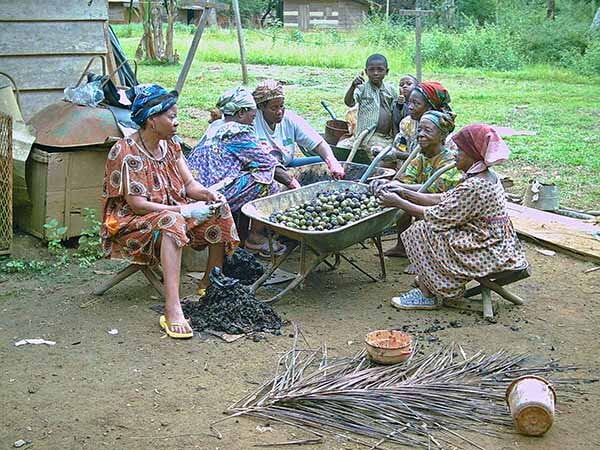
Women from a Cameroonian forest community are seen processing Djansang nuts, which can be found growing naturally in the forest. This is a wild, hard-shelled nut that is processed into oil and body soap.
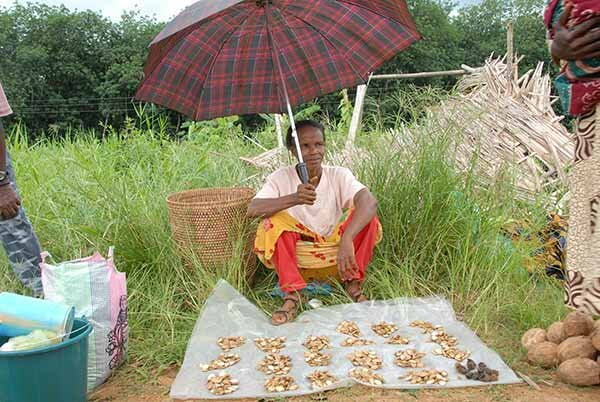
At the CEPFILD Cooperative in the Congo Basin, workers process a delivery of a new Djansang Nutcracker, an important tool for the local community.
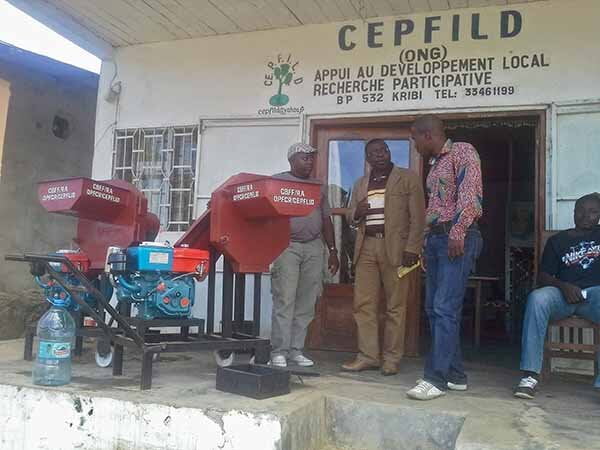
For more information about the Rainforest Alliance’s forestry work in the Congo Basin, please visit: https://thefrogblog.org.uk/2016/03/31/protecting-biodiversity-and-livelihoods-in-cameroon

